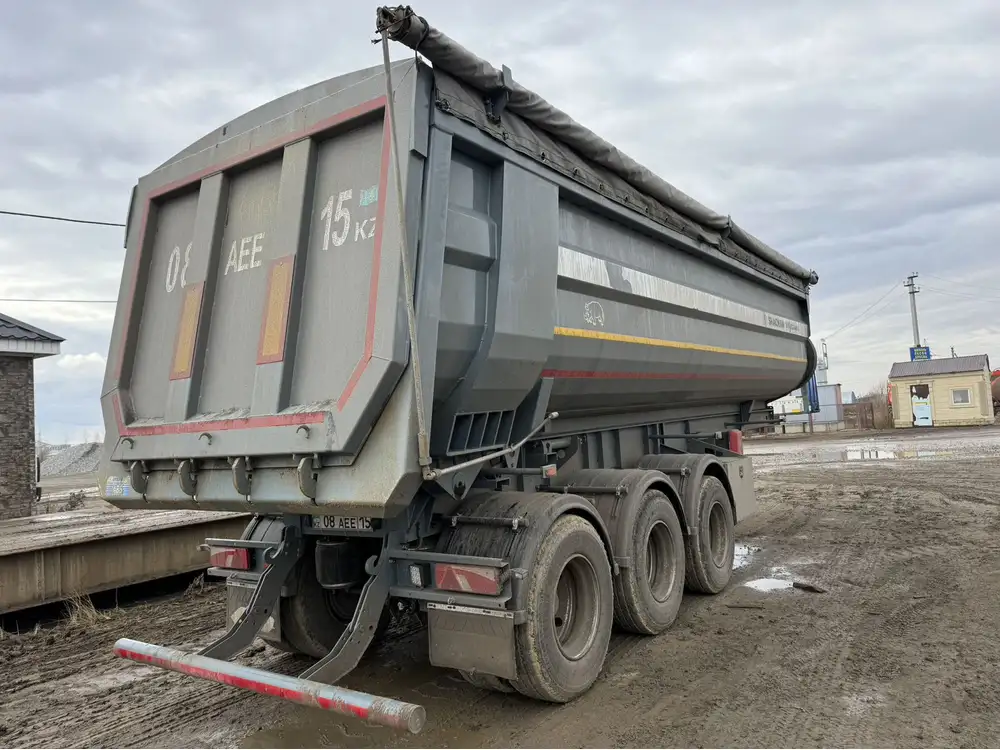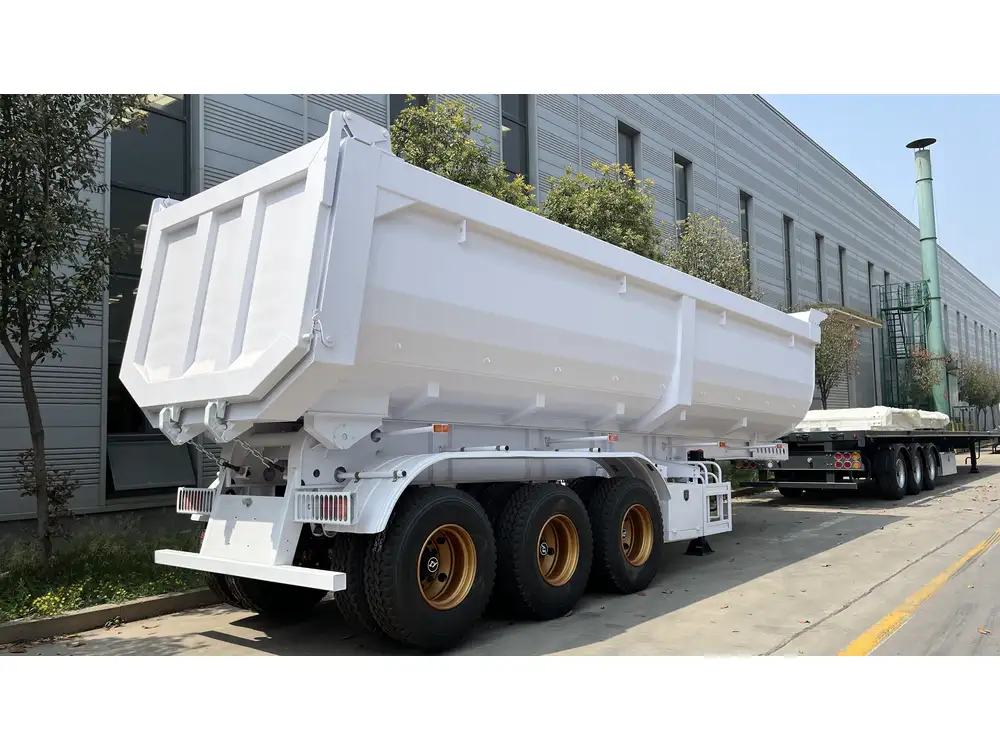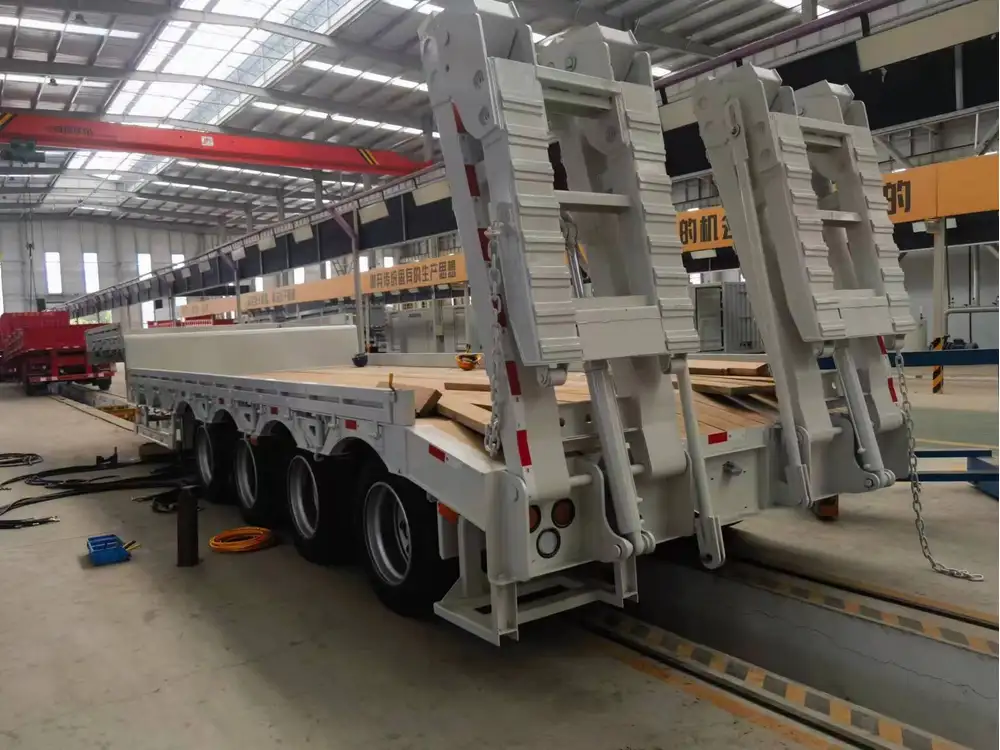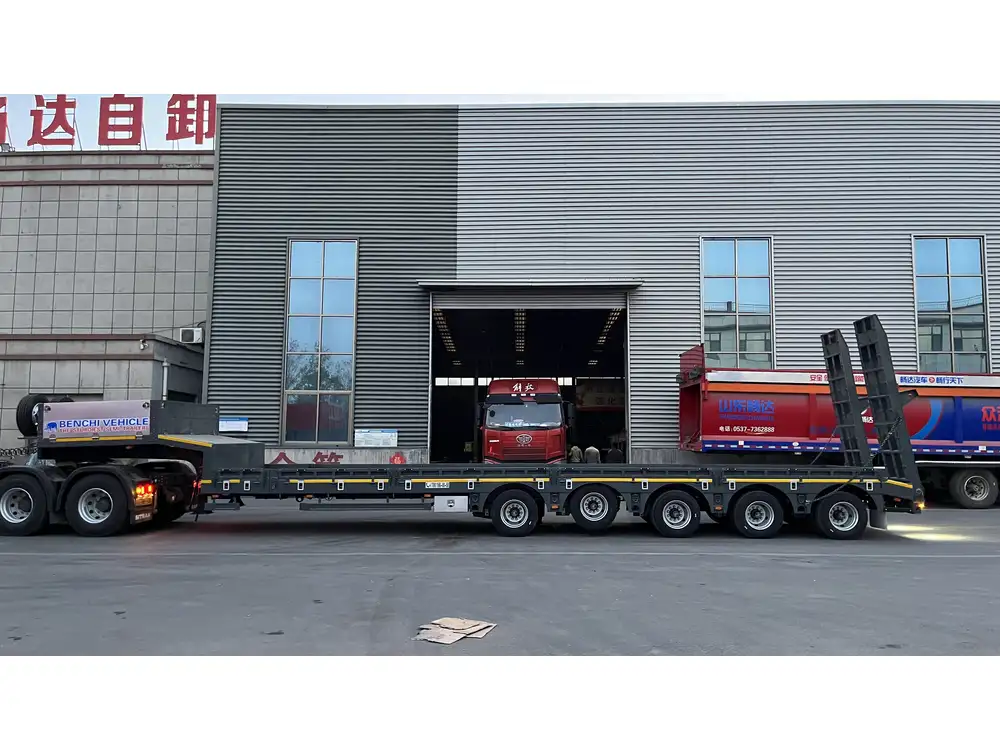Transporting heavy equipment, such as tractors, is a complex task that requires careful thought and planning. One question that frequently arises among farmers, landscapers, and equipment operators is whether a dump trailer can be used for this purpose. This article explores the feasibility, safety considerations, and best practices for using a dump trailer to move a tractor.
Understanding Dump Trailers
What is a Dump Trailer?
A dump trailer is a heavy-duty trailer equipped with a hydraulic lift mechanism. This allows the cargo area of the trailer to be tilted, enabling quick unloading of materials such as gravel, dirt, or debris. Their versatility makes them popular among construction and landscaping professionals.

Common Uses of Dump Trailers
- Construction Projects: Ideal for transporting construction materials and waste.
- Landscaping: Used in gardening and landscaping for moving soil, mulch, or large plants.
- Agriculture: Conveying fertilizer, feed, and other agricultural materials.
- Residential: Useful for home improvement projects such as renovations and debris removal.
Key Features of Dump Trailers
| Feature | Description |
|---|---|
| Weight Capacity | Typically ranges from 7,000 lbs to over 20,000 lbs. |
| Size Variability | Available in various sizes to accommodate different needs. |
| Construction Material | Generally made from heavy-duty steel or aluminum. |
| Lift Mechanism | Hydraulic lifts for efficient unloading. |
| Tandem Axles | Often equipped with tandem axles for stability and weight distribution. |
Can a Dump Trailer Safely Transport a Tractor?
The primary considerations when contemplating using a dump trailer to transport a tractor include:

Weight Considerations
A standard tractor can weigh anywhere from 1,000 lbs for small models to over 10,000 lbs for larger, more powerful units. Before using a dump trailer, it is essential to check its weight rating.
- Do Not Exceed Capacity: Ensure the total weight of the tractor and any additional equipment does not exceed the dump trailer’s weight limit. For example, a trailer rated at 12,000 lbs can safely carry tractors weighing up to approximately 9,000 lbs, accounting for the trailer’s own weight.
Size Compatibility
Tractors come in various sizes, so it is critical to measure both the tractor and the dump trailer:
- Width: Ensure your tractor fits within the width of the trailer.
- Length: The tractor must comfortably fit on the trailer without overhang.
Consider these dimensions before planning your transport.
Stability During Transport
Stability is a significant concern when transporting heavy machinery. A dump trailer, by design, is not optimal for carrying a tractor due to:
- Center of Gravity: The high center of gravity on some tractors can cause tipping if improperly loaded. Ensure the weight is evenly distributed.
- Trailer Design: Many dump trailers are built for bulk material rather than equipment. Evaluate whether the frame and ramps can handle the tractor’s weight securely.

Ramp Considerations
Most dump trailers do not come with robust loading ramps designed for heavy machinery. Using ramps that can withstand the weight of a tractor is crucial to prevent accidents during loading and unloading. If the trailer has detachable ramps, ensure they are rated for load capacity and are wide enough for stable access.
Best Practices for Loading and Unloading a Tractor on a Dump Trailer
Preparation Steps
- Inspect the Trailer: Check for signs of wear, rust, and ensure that the hydraulic system is functioning properly.
- Choose the Right Location: Ensure the area is level and stable for loading and unloading.
- Use Proper Safety Gear: Always wear gloves and steel-toed boots when handling equipment.

Loading Process
- Position the Trailer: Align the trailer on a flat surface and set the parking brake.
- Deploy Any Ramps: Set up ramps securely, ensuring they are stable and rated for the weight.
- Loading the Tractor:
- Drive the tractor slowly up the ramp.
- Keep the tractor in low gear and maintain a steady pace.
- Shift the tractor’s weight to ensure balance on the trailer.
Unloading Process
- Place the Trailer on Level Ground: Ensure it is stable.
- Check Surroundings for Safety: Assess the area for any obstacles.
- Procedure for Unloading:
- Position the tractor to face straight down the ramp for a controlled descent.
- Lower the trailer bed slowly using the hydraulic lift.
- Gradually back off the ramp while maintaining control.
Legal Considerations and Safety Regulations
When utilizing a dump trailer for transporting tractors, also consider relevant legal requirements:

Licensing and Insurance
- Ensure Proper Licensing: Check state regulations regarding the transport of heavy machinery. Some jurisdictions may require commercial driving licenses depending on the weight and type of vehicle.
- Insurance Coverage: Verify that your insurance policy covers the transportation of heavy equipment.
Safety Regulations
- Load Securely: Always use appropriate straps or chains to secure the tractor during transport.
- Follow Road Safety Regulations: Adhere to local traffic laws regarding weight limits and equipment visibility.
Wear and Tear on Equipment
Using a dump trailer to transport tractors may accelerate wear and tear on the trailer itself. Regular maintenance checks, including brake inspections and tire conditions, are vital to ensure safe operation.

Alternatives to Dump Trailers for Transporting Tractors
If using a dump trailer raises concerns, other options might be more appropriate:
Lowboy Trailers
Lowboy trailers are specifically designed for transporting heavy equipment. They provide low clearance, which is beneficial for high-profile loads like tractors. Features include:
- Enhanced Stability: Lower center of gravity helps prevent tipping.
- Loading Ramps: Many come equipped with heavy-duty ramps for easy loading and unloading.
Equipment Trailers
These trailers are engineered for various types of equipment, providing:
- Dovetail or Beavertail designs: These facilitate easier loading angles.
- Secure Tie-Down Points: Reinforced areas for strapping down loads.

Conclusion
In summary, while it is technically possible to use a dump trailer to move a tractor, significant considerations must be evaluated, including weight capacity, size compatibility, and stability. Ensuring safety during loading, unloading, and transportation is paramount to prevent accidents and equipment damage.
Decision Summary
| Option | Pros | Cons |
|---|---|---|
| Dump Trailer | Versatile for general material transport | May not support heavy equipment safely |
| Lowboy Trailer | Specifically designed for heavy loads | Often higher upfront costs |
| Equipment Trailer | Engineered for machinery transport | May have specific requirements for size |
Ultimately, if you are unsure about the safety or capability of your dump trailer for transporting a tractor, consult professionals or consider investing in a specialized transport solution. Your safety and that of your equipment should always be the priority.



